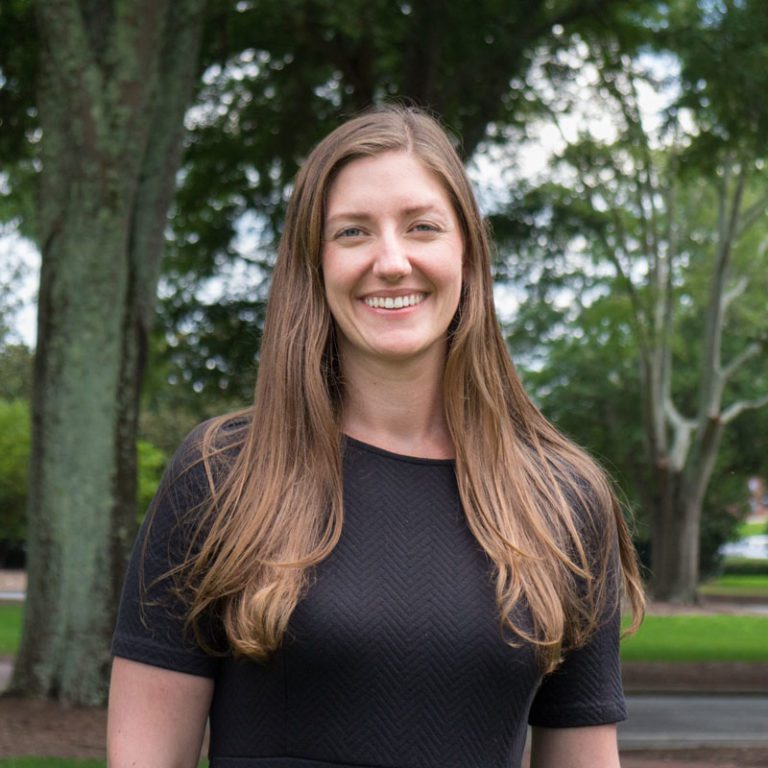
Mary Beth Daub
Assistant Professor, Chemistry
- Email: marybeth.daub@furman.edu
- Phone: 864.294.2078
- Office: Plyler 236C, Townes Science Center
Mary Beth Daub grew up in Claremont, California, and received a B.A. in chemistry from Williams College in Williamstown, Massachusetts. She returned to California for her graduate studies in organic chemistry at the University of California, Irvine, completing her Ph.D. under the guidance of Prof. Chris Vanderwal, in 2016. Her doctoral dissertation was focused on the synthesis of the kalihinanes, a family of natural products known for their potent antimalarial activity. She received an NIH-NRSA postdoctoral research fellowship to work with Prof. Tehshik Yoon at the University of Wisconsin–Madison on the development of novel methods for asymmetric photocatalysis using visible light. She joined the faculty at Furman University in Fall 2018, where her research is focused on the strategic application of photochemical reactions to the synthesis of biologically active natural products.
Education
Ph.D., University of California, Irvine
B.A., Williams College
Research
Research in the Daub lab is focused on the development of photocycloaddition reactions and their application to the synthesis of biologically active natural products. As drug-resistance poses an increasing threat to the treatment of infectious diseases, the identification of new drugs to target those infections remains an important area of research. The strategic use of photochemical reactions in natural product synthesis has an extensive history, particularly owing to the complementary nature of the structures these reactions afford to those accessible using thermal chemical reactions. The advent of visible light photocatalysis has triggered an explosive interest in the development of novel methodology using visible light. The ability of transition metal photocatalysts to function as single electron oxidants and reductants or triplet photosensitizers upon photoexcitation with visible light makes them suitable catalysts for a wide range of transformations. This versatility offers new opportunities in the strategic synthesis of natural products.
-
Daub, M. E.; Jung, H.; Lee, B. J.; Won, J.; Baik, M.-H.; Yoon, T. P. Enantioselective [2+2] Cycloadditions of Cinnamate Esters: Generalizing Lewis Acid Catalysis of Triplet Energy Transfer. J. Am. Chem. Soc., 2019, 141, 9543–9547.
-
Daub, M. E.; Prudhomme, J.; Ben Mamoun, C.; Le Roch, K. G.; Vanderwal, C. D.; Antimalarial Properties of Simplified Kalihinol Analogues. ACS Med. Chem. Lett. 2017, 8, 355-360.
-
Daub, M. E.; Roosen, P. C.; Vanderwal, C. D. General Approaches to Structurally Diverse Isocyanoditerpenes. J. Org. Chem. 2017, 82, 4533-4541.
-
Daub, M. E.; Prudhomme, J.; Le Roch, K.; Vanderwal, C. D. Synthesis and Potent Antimalarial Activity of Kalihinol B. J. Am. Chem. Soc. 2015, 137, 4912-4915.
-
Smith, T.E.; Fink, S. J.; Levine, Z. G.; McClelland, K. A.; Zachheim, A. A.; Daub, M. E. Stereochemically Versatile Synthesis of the C1-C12 Fragment of Tedanolide C. Org. Lett. 2012, 14, 1452-1455.